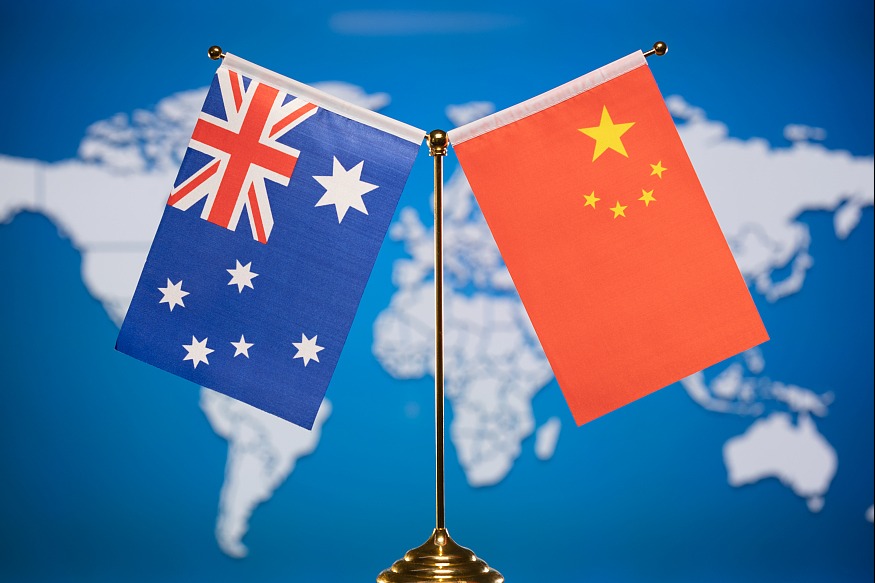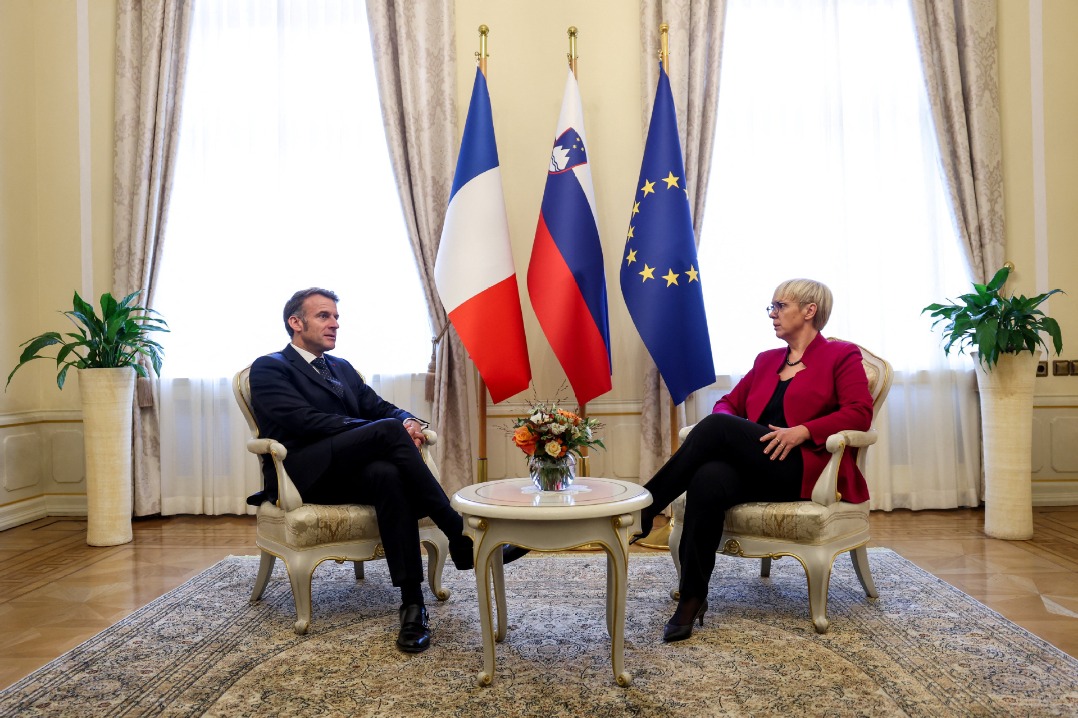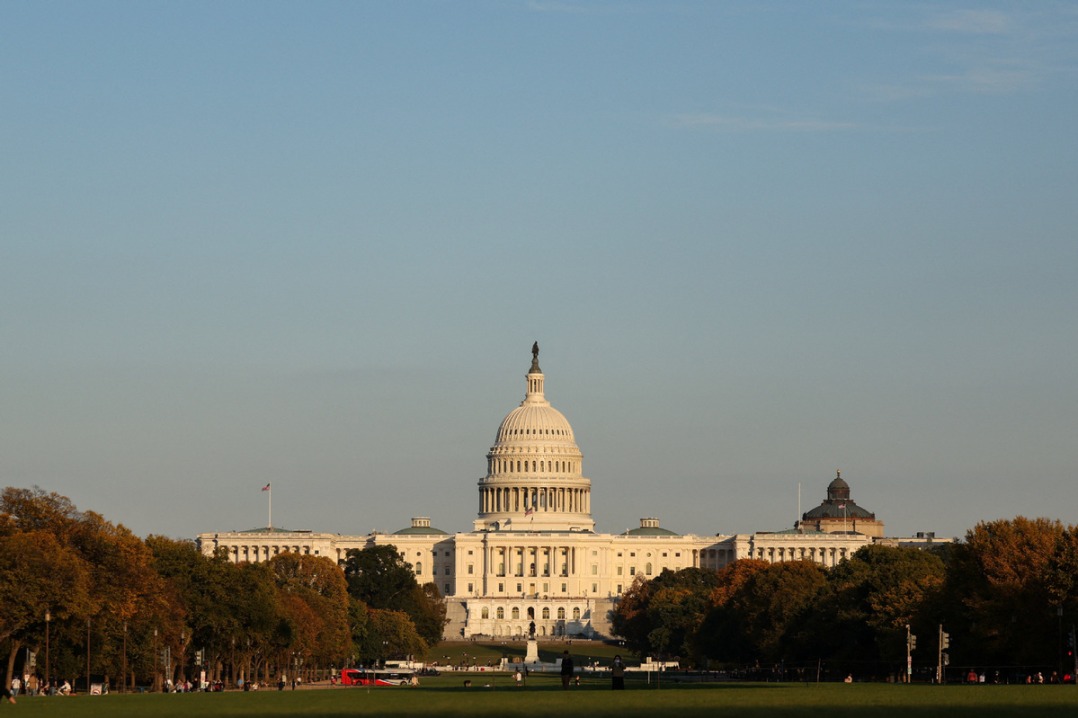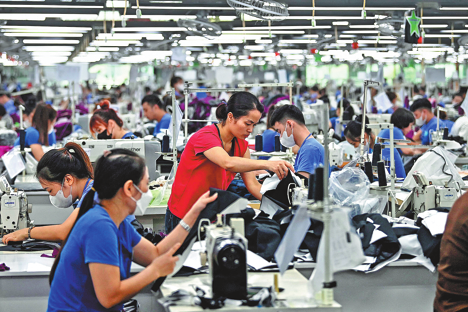US enters new phase of economic nationalism

The US-China relationship is a pacesetter for change. It is no longer simply about tariffs or reducing the United States' trade deficit.
It is a multifront effort to unravel the economic, technological, financial and even social ties that once bound the world's two largest economies, and, in the process, to sustain an era of globalization.
US President Donald Trump's first term administration initiated this break with sweeping tariffs and a crackdown on Chinese firms — the most prominent being telecom giant Huawei — followed by a politically charged campaign to ban the social media platform TikTok.
Former US president Joe Biden, despite signaling a return to multilateral diplomacy, expanded the decoupling through a high-stakes industrial policy, including the CHIPS and Science Act and the Inflation Reduction Act that aimed to bring home critical supply chains and outcompete China in semiconductors, clean energy and emerging technologies.
Now, Trump is back in the political spotlight with a renewed "America First" agenda. Trump 2.0 includes a 10 percent blanket tariff on all imports, framed as a sweeping "Liberation Day" reset of US trade policy.
The universally applied baseline tariff signals a shift from targeted tariffs to a default protectionist baseline, marking a new phase of economic nationalism.
What's striking is not just the return of economic nationalism but the normalization of conflict as a method of governance. China is the leading target, facing higher tariffs, port fees on ships linked to it, sanctions and, more recently, visa restrictions on Chinese students on the pretext of national security.
Yet structural decoupling is no longer just trade policy. It reflects a broader transformation in how the US governs itself. Trumpism, in its second incarnation, is not merely about tariffs — it is about remaking the institutional fabric of the country.
Long-standing norms such as judicial independence, the rule of law and academic autonomy are now contested terrain. The tools once reserved for foreign adversaries, such as sanctions, visa denials and politicized investigations, are now applied domestically.
Two emblematic examples illustrate this shift.
In May, the US Court of International Trade ruled that the Trump administration's tariffs were unlawful, finding that the International Emergency Economic Powers Act does not grant the president authority to impose such sweeping trade measures without congressional approval. The White House has since appealed the decision, and the case is now likely headed to the Supreme Court, setting up a high-stakes legal battle over the constitutional limits of presidential power in trade.
Meanwhile, the Trump administration has intensified its campaign against elite universities, with Harvard University in the front row. The Department of Homeland Security revoked Harvard's certification to enroll international students, citing regulatory violations. Harvard challenged the move, and a federal judge issued a preliminary injunction that allowed continued enrollment while the case proceeds.
At the same time, the Trump administration has ordered a review of federal contracts with Harvard and questioned its tax-exempt status, accusing the university of violating federal priorities. The administration's broader aim is to defund and discipline institutions seen as liberal strongholds.
This push reflects a larger effort to reshape higher education by using federal levers — funding, immigration and taxation — as tools to enforce conformity and reduce the influence of independent-minded academic institutions.
In this light, the US-China rivalry has become inseparable from US' internal fragmentation. The "Make America Great Again" movement seeks not only to decouple from China but to decouple the federal government from its own postwar liberal consensus.
The foundational pillars of the US system — checks and balances and separation of powers — are being undermined alongside its international relationships.
Beijing, on its part, has been taking careful notes since 2016. The escalation of punitive policies under both Trump 1.0 and Biden convinced China's leadership that containment is bipartisan and here to stay.
The 2018 arrest of Huawei's Chief Financial Officer Meng Wanzhou in Canada, done at the request of the US Department of Justice, was a wake-up call. It was followed by a cascade of sanctions and export controls: bans on advanced chip exports, restrictions on US equipment and software sales, and targeted curbs on artificial intelligence, quantum computing and supercomputers. These actions shattered any remaining faith in a return to business as usual. In response, China has developed a dual strategy of defense and offense.
Domestically, it is accelerating self-reliance in many types of technologies and products. Globally, it is diversifying risk through bilateral trade deals, regional partnerships and strategic expansion of the BRICS.
Meanwhile, much of the world is adjusting to this new reality. Allies and nonaligned states alike have grown used to the Trumpian style of governance. The first shock may have faded. Many now hedge, advancing bilateral or multilateral agreements without US involvement, particularly in trade, digital infrastructure and energy transition.
This is not a wholesale rejection of the US, but a pragmatic recalibration. As Washington turns inward, consumed by ideological battles and hyperpartisan policymaking, other states are increasingly willing to pursue their interests independently. In this sense, structural decoupling is not only about the US and China. It is about the fragmentation of the US-led global order itself.
The question now is whether the US is, to borrow Trump's own language, "running out of cards". Tariffs and tech controls have been deployed. Sanction fatigue is spreading. There's only so much reshoring the US industry can absorb.
China, despite its economic challenges, continues to expand its options — investing in research and development, negotiating new supply chains and deepening influence in the Global South.
In the end, the world may not be divided cleanly into rival camps. The future is likely to be multipolar, messy and contested. Structural decoupling won't reverse globalization, but will reshape it — rerouting trade flows, rewriting norms and forcing nations to adapt to a more volatile, less US-centric environment.
The lesson is clear: This is not just a US-China rivalry; it is a transformation of governance, legitimacy and power.
The US — its system, its values and its leadership — now faces scrutiny not only from its rivals, but also from its allies. The global order that emerges from this rupture will not be built on 20th-century assumptions. It is being reassembled in real time.
The author is chief development strategist at the Hong Kong University of Science and Technology's Institute for the Environment.
































